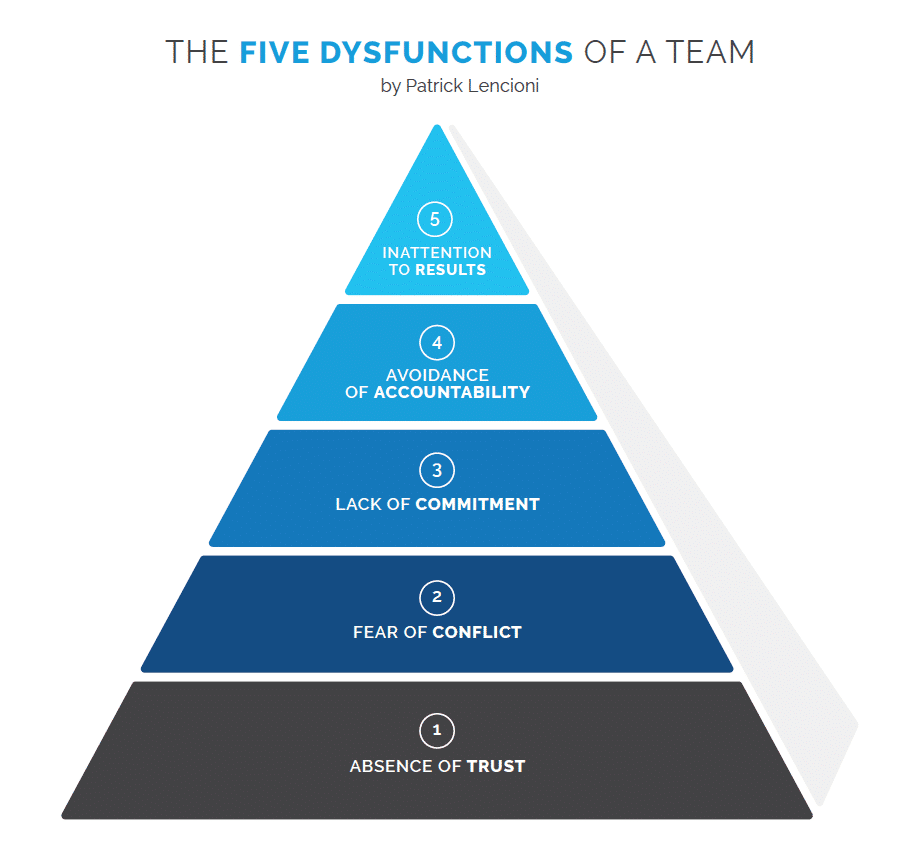The title of this post may seem a bit obvious, and I think it is, but taken from a wider view it can get a little interesting.
In Patrick Lencioni’s book “The Five Dysfunctions of a Team“, he breaks down the typical dysfunctions in the form of a pyramid, shown here.

In his pyramid, you need to start at the bottom and solve each piece as you go up. Any higher level can’t be resolved until the ones below it are solid first.
Absence of Trust: Without trust, people will hide mistakes and make assumptions about others, both of which can be deadly for a team.
Fear of Conflict: This ties in closely with trust; if you’re trying to hide mistakes, you’re going to hide from conflict. Conflict can be a very powerful and productive tool if used with those you trust.
Lack of Commitment: If you don’t feel free to fight for what you believe in with a little conflict, you won’t be bought into the solution to help solve it and your commitment level will stay low.
Avoidance of Accountability: This ties into all of the pieces before it, but I see trust shining through strongly here; if you don’t trust those around you, you’re not going to take accountability. This leads nicely into the final level.
Inattention to Results: It might not even be that you’re inattentive, per se, but you just don’t know what to be watching for. If you trust your team, work through conflict, commit to the goal, and you’re accountable for the results, watching them becomes easy. If any of the preceding pieces are missing, though, then the results might be difficult to even track.
In the book, Lencioni says:
“If you could get all the people in an organization rowing in the same direction, you could dominate any industry, in any market, against any competition, at any time.”
That pyramid is the key, and it starts with the base. Establish trust, and your ceiling can only grow from there.



